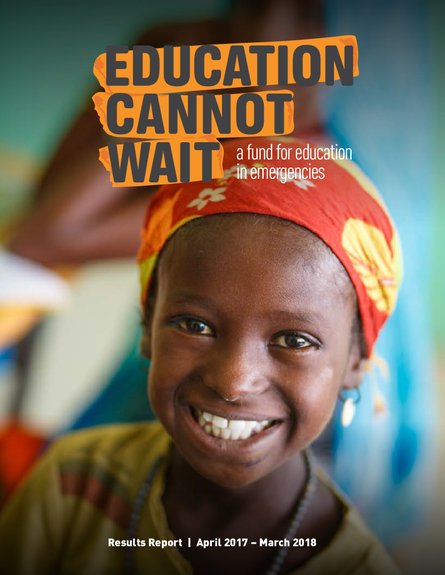
ECW’s investments are geared to reach the “furthest behind”, i.e. the millions of children and youth who have traditionally fallen between the cracks of the aid system. From the inception of the funds activities in 2017 through 31 March 2018, 57 per cent of children reached by ECW-supported education programmes were refugees, 9 per cent were internally displaced, 8 per cent belonged to host communities, and 22 per cent were part of other target groups such as children affected by natural disasters or conflict but who are not displaced.
The Fund supports programmes spanning a wide spectrum of context-specific activities to meet education needs of crisis-affected children and youth aged 3-18 years old with a focus on improving access to education, equity and gender equality, continuity, protection and quality of learning. These include learning materials and psychosocial support, school and classroom equipment and infrastructure, teachers’ training and support, and non-formal education programmes.
Girls account for 48 per cent of all children reached by the Fund’s investments which is a crucial achievement to reduce the gender gap in crisis settings, as crises disproportionately affect girls’ education; in Afghanistan alone, where girls represent only 39 per cent of primary level school enrolment, ECW investments reached 60 per cent of girls. Another important achievement is the inclusion of early childhood development components – a sector neglected in crisis settings – in two thirds of country programmes supported by ECW, ensuring children in crisis settings benefit from a good start.
The report also highlights ECW’s unique role in catalyzing joint efforts between humanitarian and development aid actors to ensure more effective and sustainable responses and strengthen response capacity and accountability. In particular, ECW is delivering on its promise to ensure rapid education responses from the onset of crises: for example, when the massive influx of Rohingya refugees was recorded in Bangladesh in August-September 2017, ECW was among the first organizations to respond, proving funding to partners on the ground within 6 weeks of the start of the crisis. With 19 per cent of ECW’s funds channeled as directly as possible to local and national responders at country level, ECW is a key player in advancing the localization of aid agenda, already nearing the Grand Bargain target of 25 per cent by 2020 set by a group of the world’s biggest donors and aid providers.